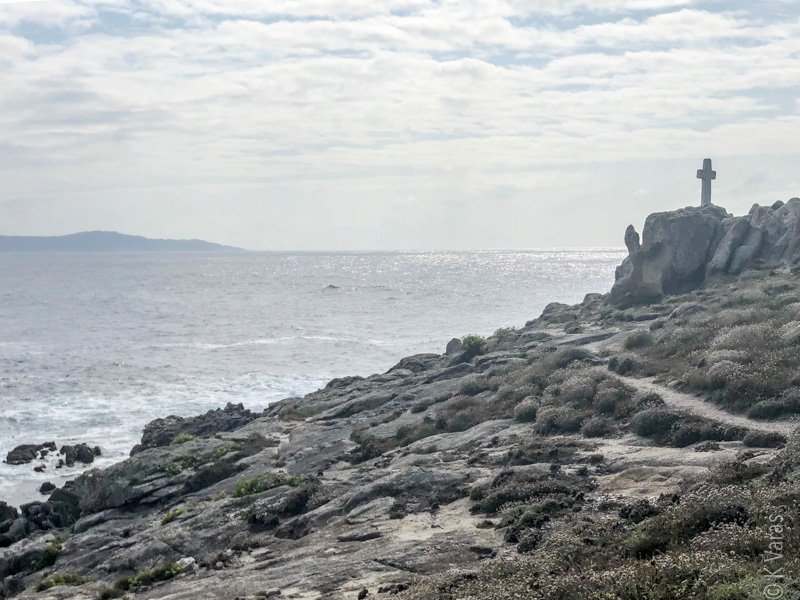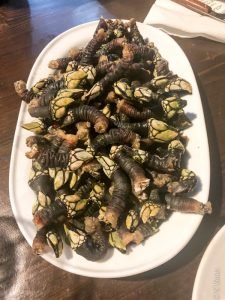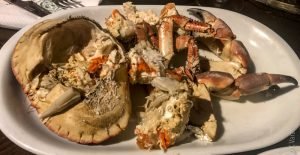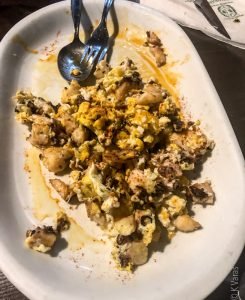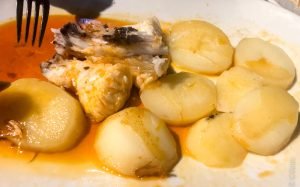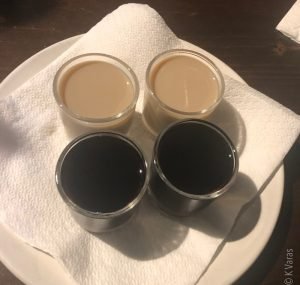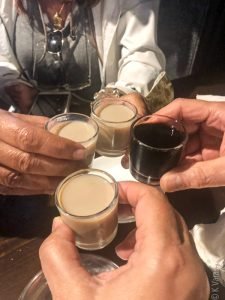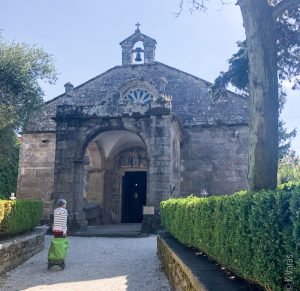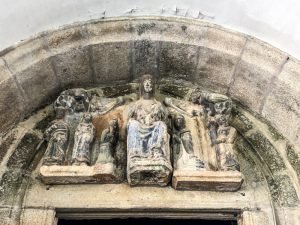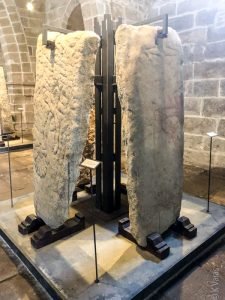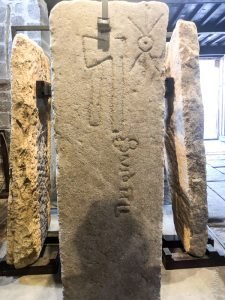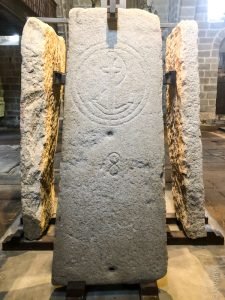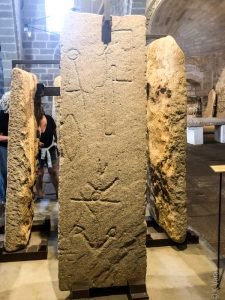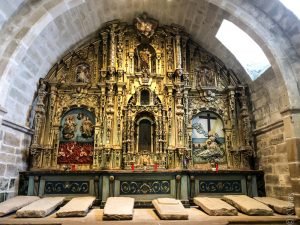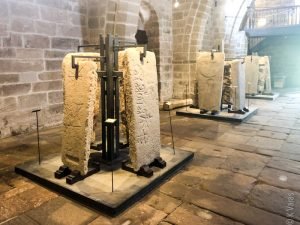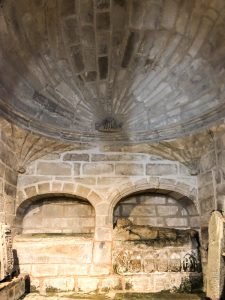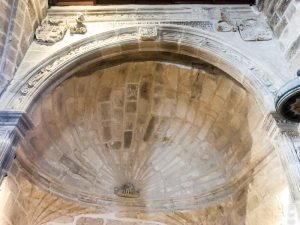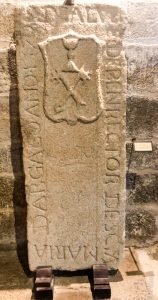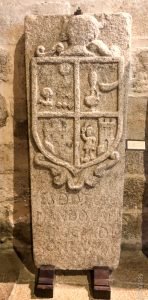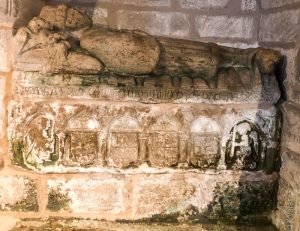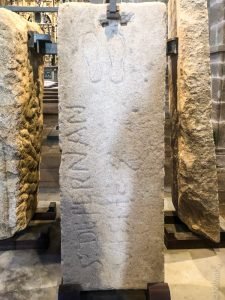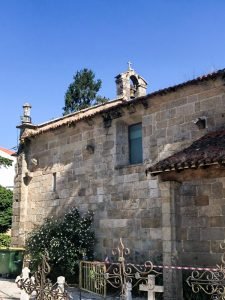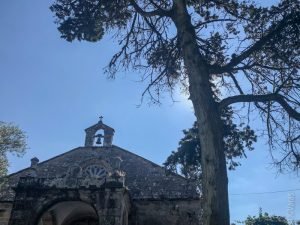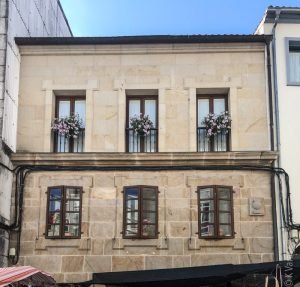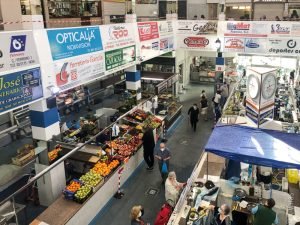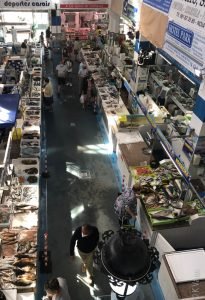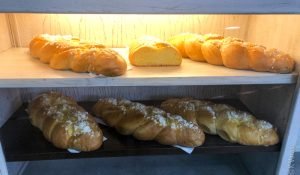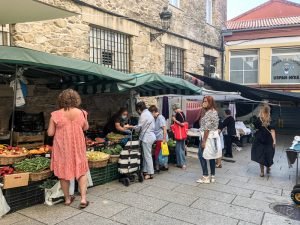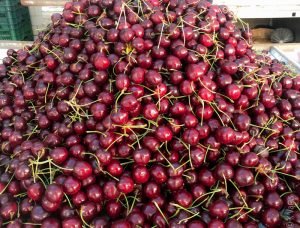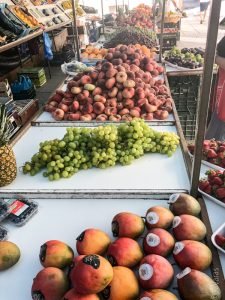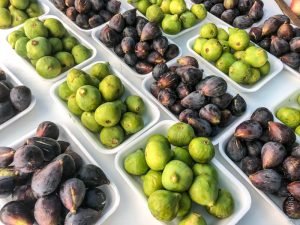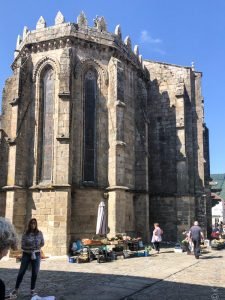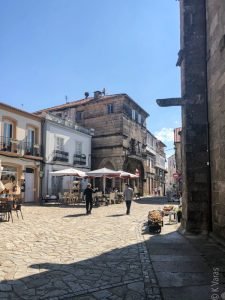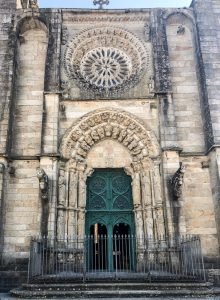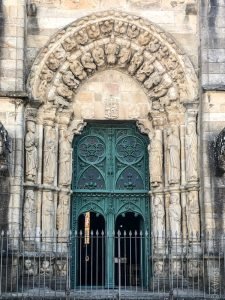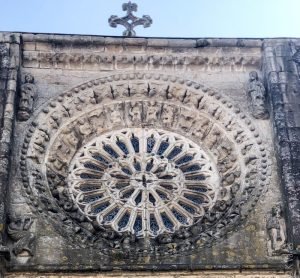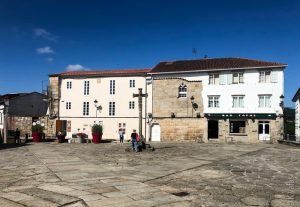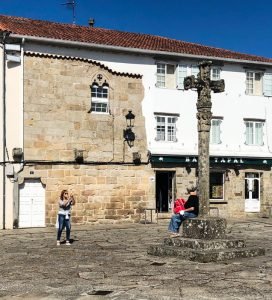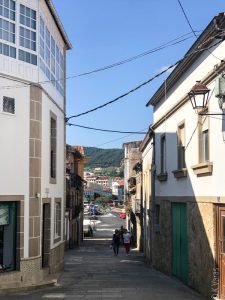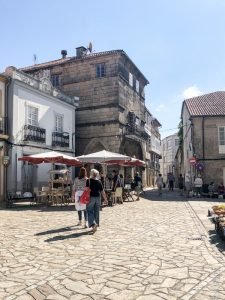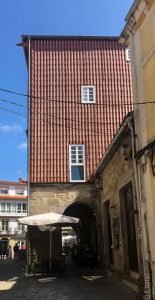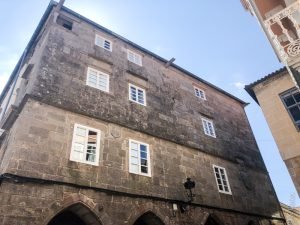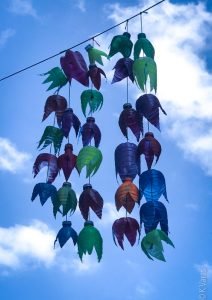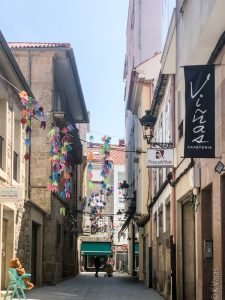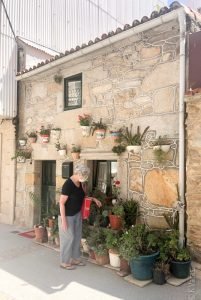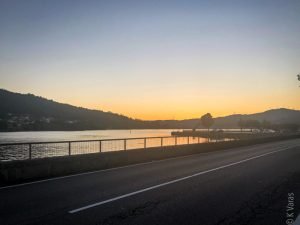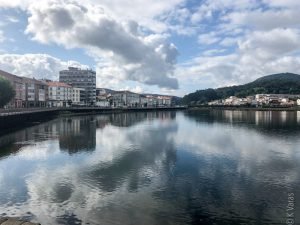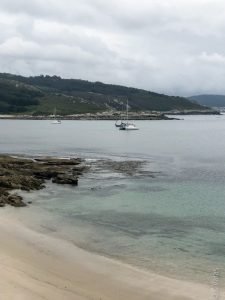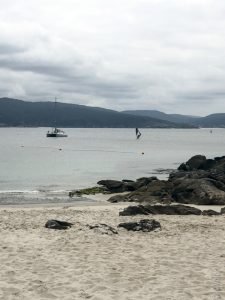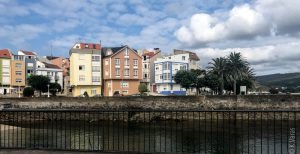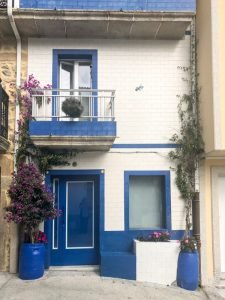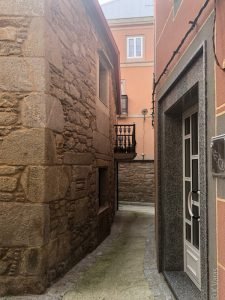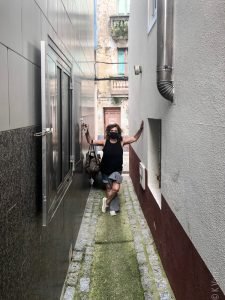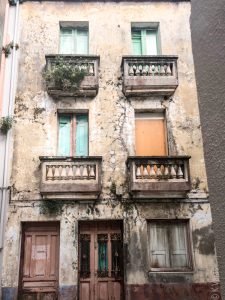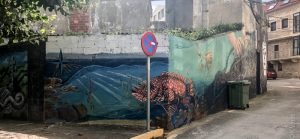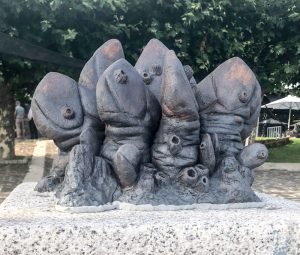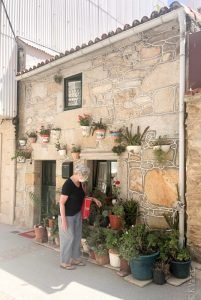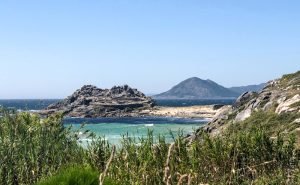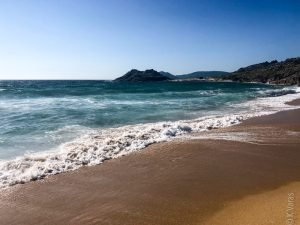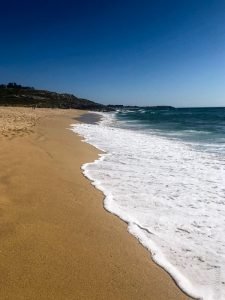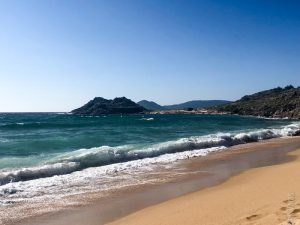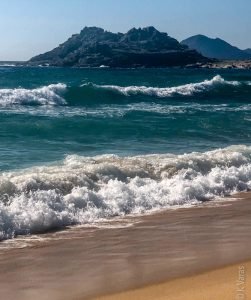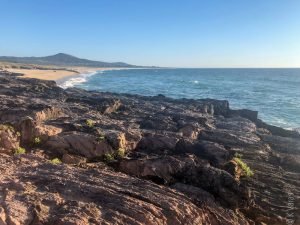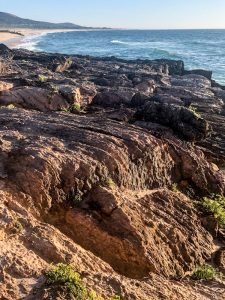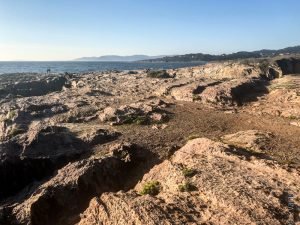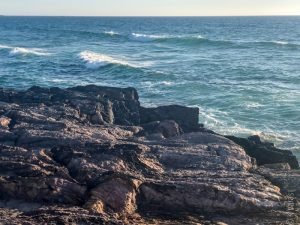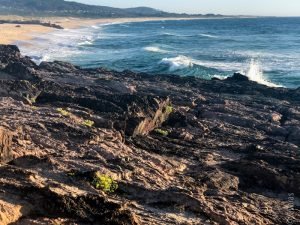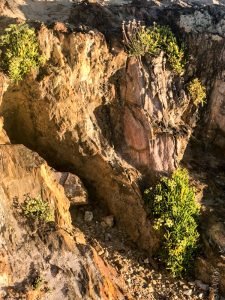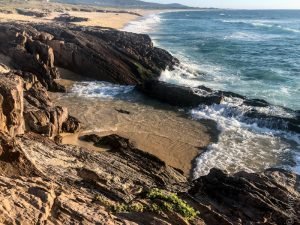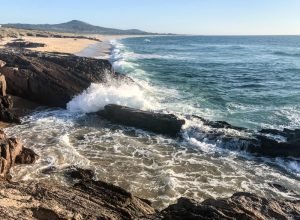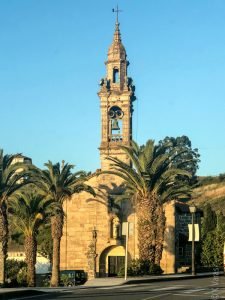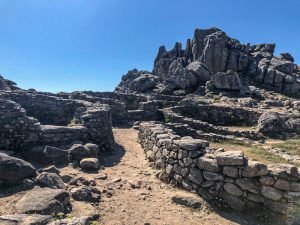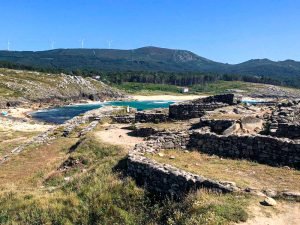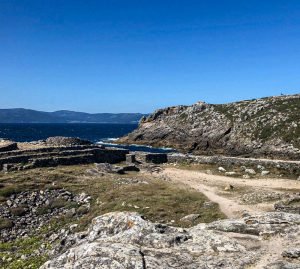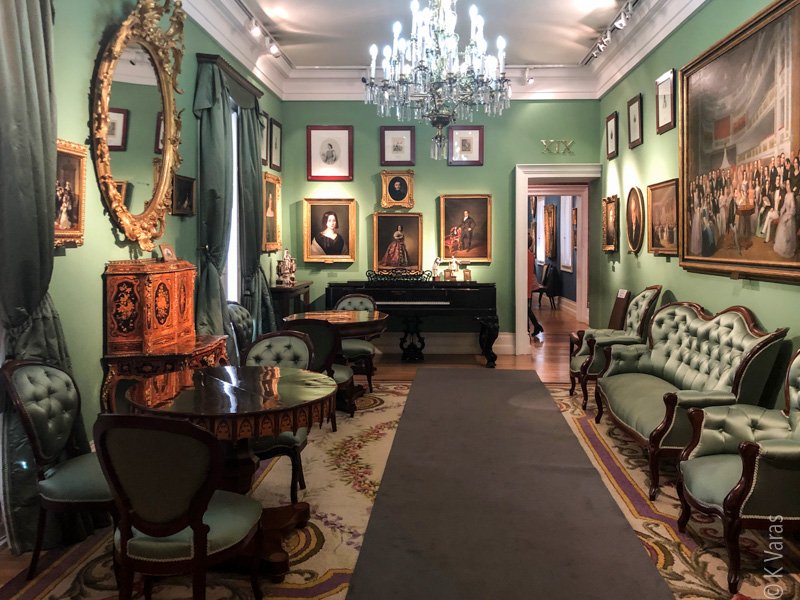
Rías Baixas, Day Two
It isn’t my favourite thing to share sleeping quarters with other people, but it’s amazing how well one can sleep when the others snore as much (or as little) as you do, are not early birds, and had spent the previous night drinking as much as you. Suffice to say, we did not get up very early. But when we did, it didn’t take long to get going and start the day dedicated, primarily, to exploring the town of Noia.
We found a nice place for breakfast and, once our batteries were recharged on coffee and some great local tortilla, we made our way to la Iglesia de Santa María a Nova which is not a church but a local historical museum devoted primarily to laudas sepulcrales or sepulchral plaques, otherwise known as ledger stones, inscribed stone slabs usually laid into the floor of a church to commemorate or mark the place of burial of an important person. What makes these particular ledger stones interesting, however, is that majority of them are for people who were integral members of society in the region, so not the kings, princes, and lords, but rather those with crucial occupations, such as the butchers, tanners, tailors, stonecutters, carpenters, shoemakers, sailors, and many others. Each stone was marked with special icons representing their given trade or guild, and I have to wonder what the stonecutter felt as he was chiseling his own guild’s emblem onto a colleague’s ledger stone. He probably thought “I sure hope they get the kerning right on my stone when the time comes.” (I mention this because I have seen many a stone with very poor kerning and word spacing throughout my travels.)

The building itself is very old, dating back to 1327 and it is surrounded by a typical Galician cemetery. The ledger stones are a bit newer, with the majority and those dedicated to the regular folk from XIV-XVI centuries. There are some nobles interned in the church itself and those are more recent still, mainly from XVII-XIX centuries. The age, however, doesn’t almost matter anymore … everything just felt so old there, the stone having that timeless quality of just being there, hundreds of years later, with only the harsh ocean air taking the edges off a bit, smoothing out the corners. It is difficult to not wonder about the people whose bodies lay below such stones, their hopes and dreams, their craft and trade practiced daily and passed on to their descendants. How likely is it that the shoemaker in Noia (if there is one) is a descendant of the fellow lying beneath a stone with two shoe prints carved into it? Of course the craft of artisan shoemaking has largely disappeared (my own grandfather was one but he died over 60 years ago) so that’s probably not the best example, but I don’t have a picture of the butcher’s stone.

Our next stop was the local market which was dwarfed by the outdoor one that just happened to have been taking place that day. Were we lucky or what? It was exciting to see all the fruit and vegetable stalls, the smell of fresh strawberries (in July!), cherries, and figs permeating the narrow streets of the old town. We couldn’t say ‘no’ to such delicious offerings and bought a bunch of figs and cherries to take with us. There was also a bit of a commotion as someone was accused of stealing (or attempting to steal) and we witnessed an interesting exchange of words, as well as the slinking off of the alleged perpetrator though no police was called, as far as I could tell. We all hugged our bags a little tighter after that little encounter, that’s for sure.

We continued our tour with a visit to the Igrexa de San Martiño de Noia, a rather plain (on the inside) catholic church built in 1434 in the centre of the old town. While the market stalls hugged the sides of the church in search for shade, the little plaza in front was pretty empty with an old cross facing the main façade of the church. This made it a lovely spot for a photoshoot: Sagrario and her model, Fely, had a blast making the best of the light and location. Fely was more than happy to show off her custom-made shopping bag and I’m sure some of the pics eventually made it into some promotional materials for her shop. I’m very happy to have a blue model of the same bag, one I plan to faithfully use while shopping for my produce.

We spent a little more time roaming around the narrow streets of the old town, coming across quaint shops, restaurants, and dwellings. One of these was so cute and different we took a bunch of photos in front of it, only to be surprised by a couple who clearly wanted to visit the residents of said house. Their friends weren’t in so they went off but while they were doing so I noticed my three Spanish friends giggling and dancing around as if in desperate need of the facilities … it appears that the man in the couple was some very famous actor or TV personality and his partner had a sour look on her face probably caused by the attention he was getting. I was, of course, totally oblivious to all of this, his face not registering with me at all, and I couldn’t figure out what was going on until the couple was well out of sight: then the noises got louder and the joy of seeing him quickly changed to despair as we realized none of us had taken a picture to document/verify the man’s identity. I still have no clue who he was, but it was fun to watch grown women behave like silly teenage girls for a moment.

The day was gorgeous so we decided to get out of town a little and go south, first to the town of Porto do Son for some lunch and then to a nearby beach for some chill time. I don’t remember whose idea was to go to the port area of Porto do Son but it was supposed to be a great location for a tasty meal. Unfortunately for us, we arrived a little late in the day so was the place not only full of visitors already, there were few restaurants left with available seating. After a long walk around the picturesque harbour we ended up at the one place that would feed us, provided that we didn’t mind the massive construction site right next to it. As hungry as we were by then, the choice was clear: we eat and do our best to shut out the noise from next door. Fortunately the workers had to eat too and at some point it almost became bearable to enjoy some delicious navajas and other fishy dishes.
There was no question that the next stop on our trip would be a beach, and what a gorgeous beach it was! A little further south of Porto do Son we came to Praia do Castro de Baroña, a stretch of sand right next to an ancient archeological site of Castro do Baroña. Never mind the amazing ocean views from pretty much any vantage point, there were the stone foundations of the circular dwellings that had stood in that very spot over 2,000 years ago! We’re talking Iron Age stuff here, and all I could think about was that people were living in this remote land so long and probably enjoying the very same beach I was sitting on now. Of course, their lives were a lot harsher back then, and maybe they never used the beach for pure pleasure, at least that’s what historians tend to remind us of, and certainly no cinematic representation of ancient times ever shows people sunbathing, but I am going to go out on a limb here and suggest that they did, in fact, occasionally, plop themselves down, just I like did just then, and revel in the warm sun on their bodies and the cool wind in their hair … just before they were probably killed by the Romans pushing their way in to take over their meagre lands … but maybe not. In any case, it was easy to just sit there and imagine what might have been while the waves crashed onto the shore, just as they did two millennia ago.

As the sun started to set, we stopped for a quick drink at a bar by the beach and watched the sun go down. Afterwards, we headed back to Noia and yet another dinner at the same restaurant we ate at the night before. This time we ordered a plate of the most dangerous and most expensive seafood there is: percebes (Pollicipes pollicipes) or gooseneck barnacle, harvested manually for over 10,000 years. The best barnacles thrive only in the dangerous surf on the rocky coasts of Galicia. Thus, they have to be collected at high risk by so-called Percebeiros, the truly crazy people who dangle over the raging waves and pick the barnacles off by hand while trying to not get killed. The wilder the sea and the more exposed the rocks are to the heavy tides, the meatier, thicker and also more expensive the percebes are. People will pay up to 200€ per kilo for these tasty morsels but we were lucky to get some for a much more reasonable price of 45€. They don’t take much cooking, as with most crustaceans, boiling them lightly in a flavourful broth is pretty much all that is required and then you just suck them out from their shell as they make a satisfying ‘pop’ sound. We definitely had our fill of them and I certainly thought they were delicious.
Another great day of exploring, relaxing, and eating has come to an end … somehow I doubt any of us will hear the others’ snoring tonight!
